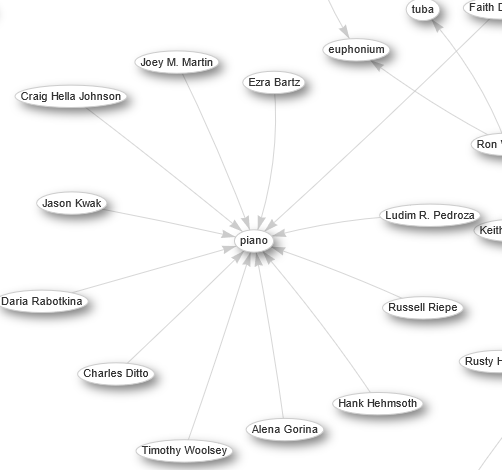Have you ever wondered why something you search for on the web appears as the first or second entry of your query? There are many contributing factors, but the formulation of structured linked data through Wikidata can play a key role in moving a name, place, resource, etc. to the top. With this goal in mind, librarians from the University Libraries (UL) have been creating and editing Wikidata items to move the work of Texas State University researchers and university collections towards the top of each query. Since the fall of 2020, the project team has been working on enhancing Wikidata records for faculty, Wittliff archives, oral histories, and journal titles, resulting in great success in giving our faculty research and university collections more prominence on the web.
How does Wikidata work?
Everybody knows about Wikipedia, the free online encyclopedia. However, less commonly known is Wikidata, a “free knowledge database” also hosted by the Wikimedia Foundation. Wikidata provides a platform that allows the community to organize facts and assertions into statements that reach into the semantic data realm.
For example, in Wikipedia, you can read the following sentence containing hyperlinks: “Texas State University is a public research university in San Marcos, Texas.” (https://en.wikipedia.org/wiki/Texas_State_University)
In Wikidata, this information is formulated into structured data: (https://www.wikidata.org/wiki/Q1495387)


Computer algorithms can understand the semantics of this data much better than the text and hyperlinks in Wikipedia. Moreover, the data is multi-lingual, machine-actionable, and able to be queried. Since Google and other agents use Wikidata records, creating new items can result in improved search rankings, particularly for common names, as well as the creation of a knowledge panel on Google. Not to mention that queries can now be created to pull specific data, such as this one showing instruments the faculty of the School of Music play: https://w.wiki/4pG9.

Scholia is another service that showcases information in Wikidata. It does this by creating visual profiles, which include universities, departments, or peoples. Here is a co-author graph from the main Texas State University page: https://scholia.toolforge.org/organization/Q1495387.

From September 2020 onward, the project team created more than 700 items (records), performed more than 7,500 total edits, and added more than 6,700 references.
They continue to create and enhance Wikidata records for our faculty, departments, and unique archives. This work not only contributes to the sum of knowledge available via linked open data, but also highlights the scholarship and collections of Texas State. The goal is to continue to make Texas State prominent in multiple ways.
This article contributed by Mary Aycock, database and metadata coordinator.
